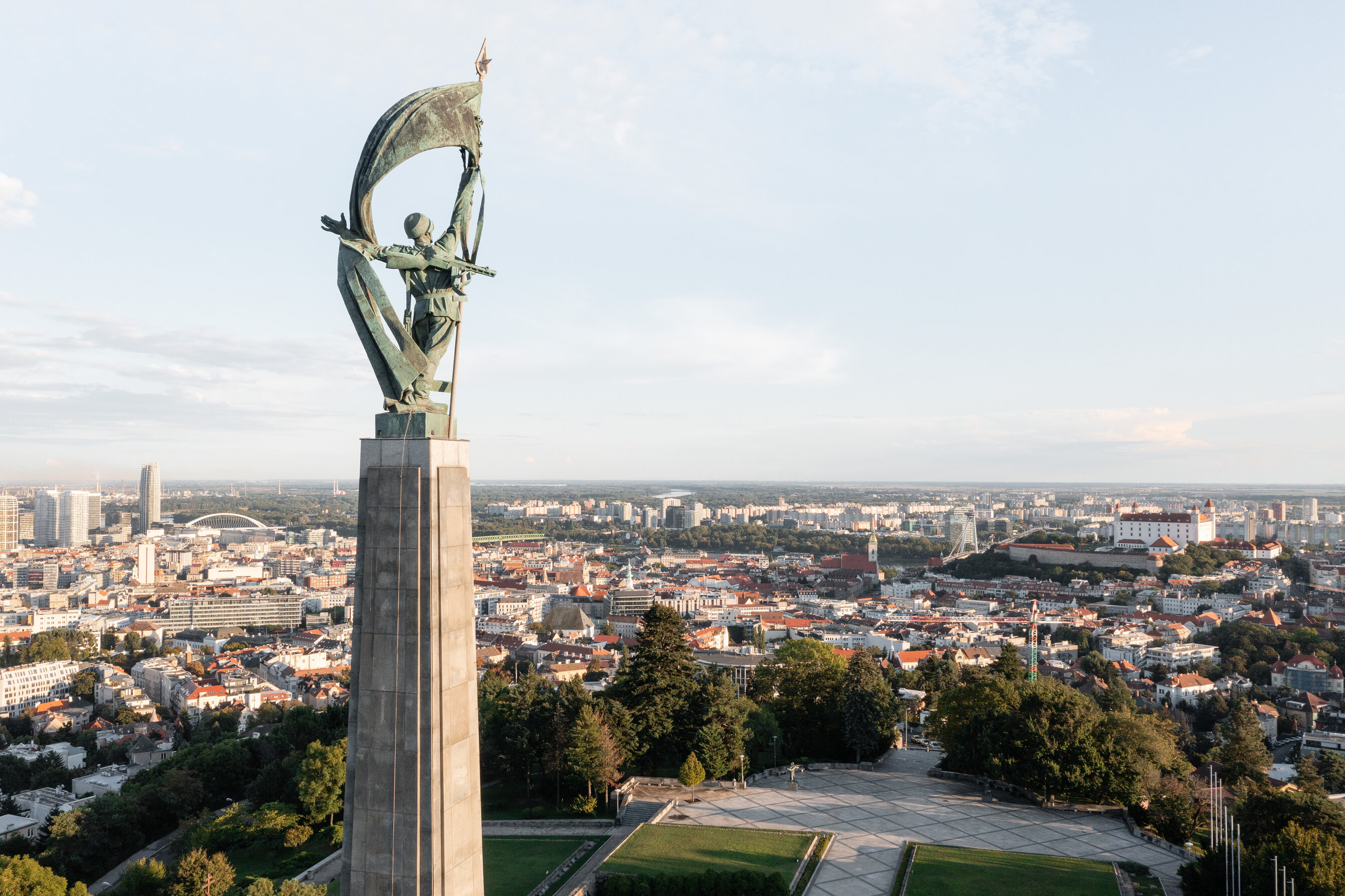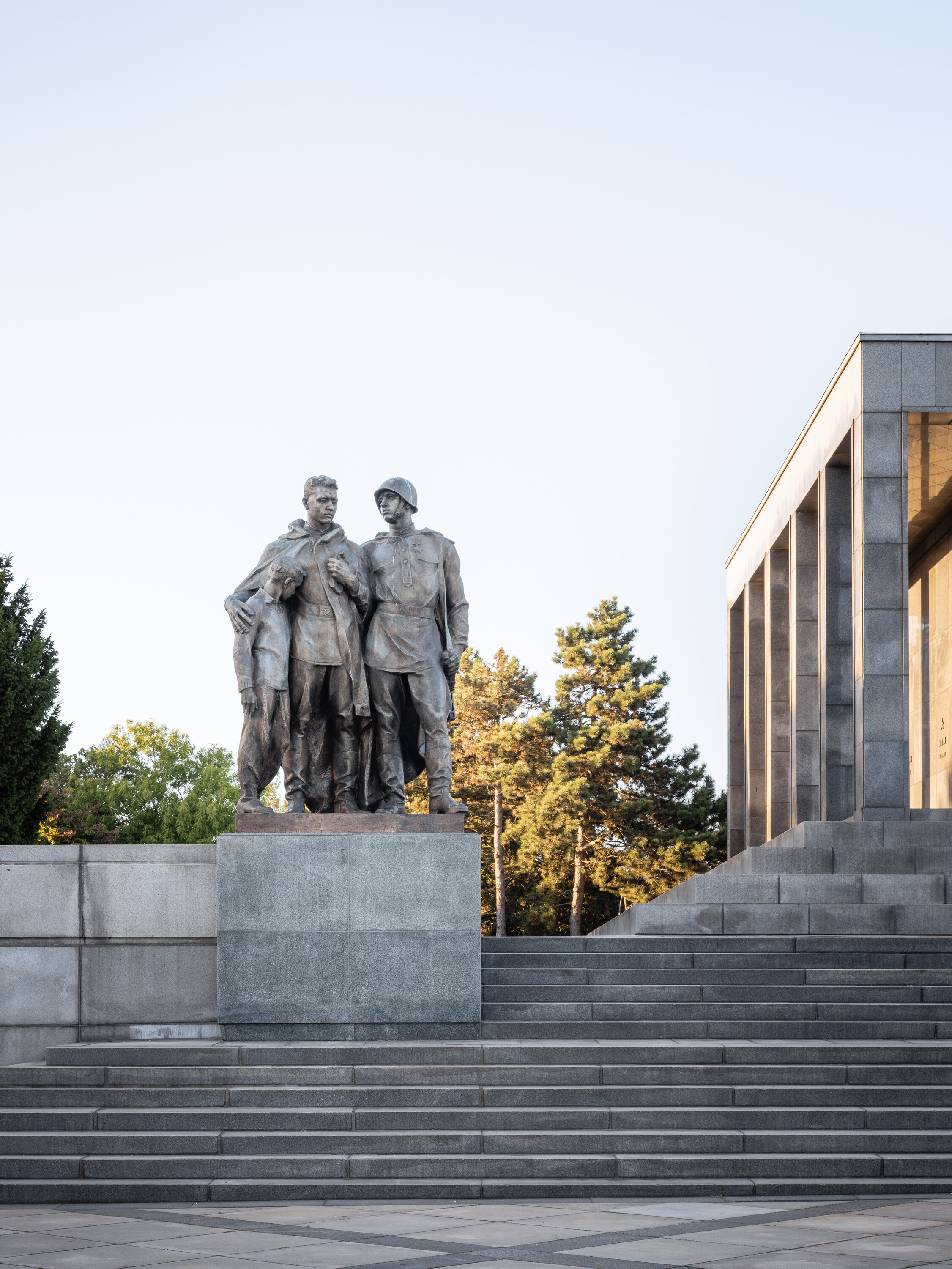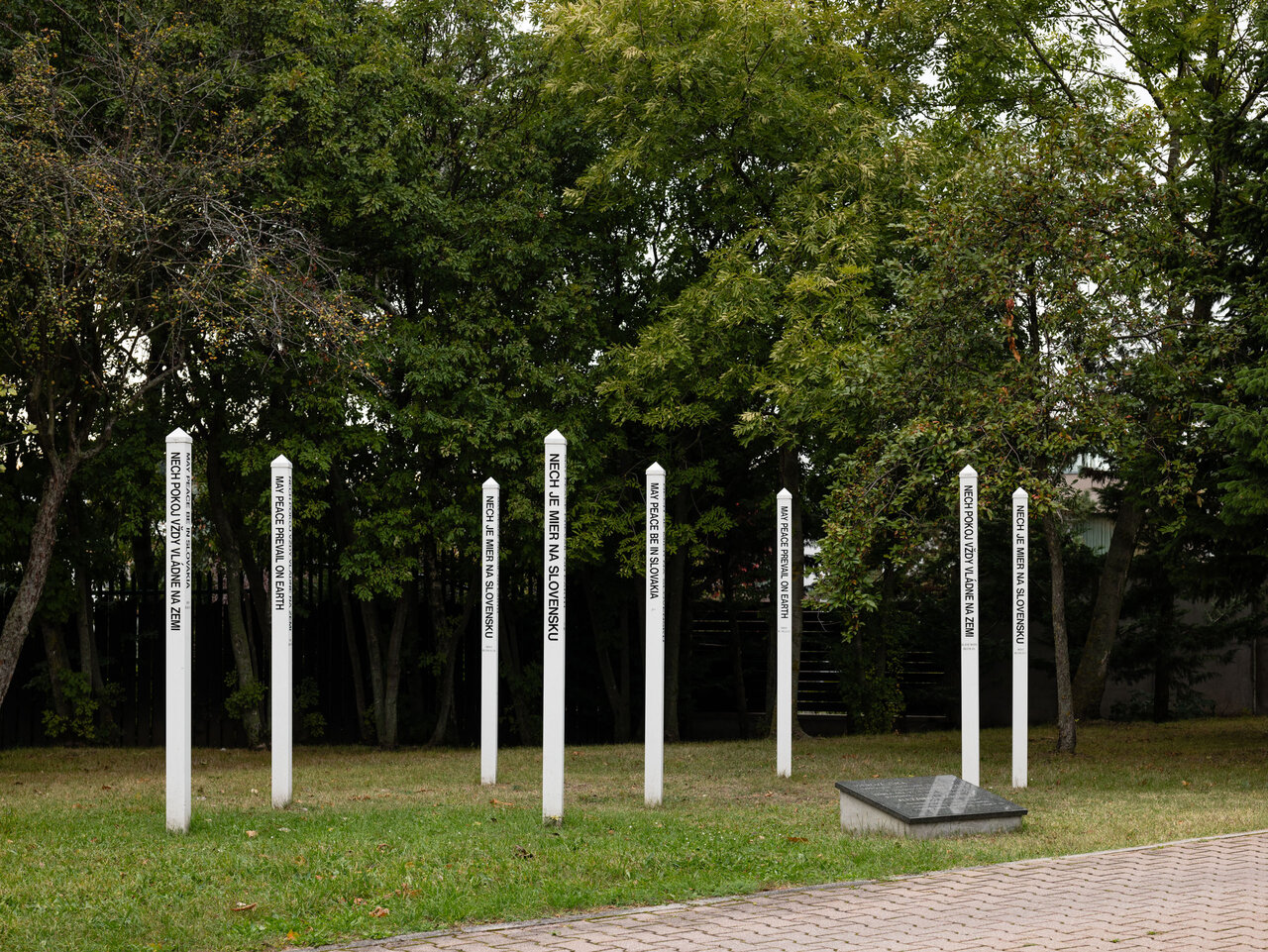Slavín – a memorial to Soviet soldiers killed in the territory of western Slovakia during the Second World War – was built between 1957 and 1960. The memorial was unveiled on the 15th anniversary of Bratislava’s liberation by the Red Army of the former Soviet Union. It was constructed during the rise of the communist regime with its harsh propaganda, a period characterised by the building of Slovakia’s largest memorial complexes dedicated to the Red (Soviet) Army (in Svidník and Liptovský Mikuláš).
Author of the architectural concept was Ján Svetlík, a Slovak sculptor and architect whose project won the third round of the competition for design of the memorial. An elaborate sculptural showpiece was envisaged from the outset, so the architect collaborated with various renowned sculptors – Tibor Bartfay, Jozef Kostka, Rudolf Pribiš, Ján Kulich, Ladislav Snopek, Alexander Trizuljak, Juraj Krén, and Dezider Castiglione.
The memorial architecture comprises three compositionally interconnected sections – a southern entrance with monumental staircase, a central cemetery, and the memorial itself to the north. The front wall of the staircase is adorned with L. Snopek’s granite relief Oath on the Battle Flag, and the area leading to the graves features two sculptures by J. Kostka – Gratitude and Passing of the Wreaths.
Slavín’s dominant element is a memorial built on an elevated platform. Accessible via the staircase, it features two statues – T. Bartfay’s At the Grave of a Comrade to the left_,_ and J. Kulich’s After the Battle to the right. Entry to the ceremonial hall is through a double door adorned with figural reliefs by R. Pribiš. A tall, tapering, prismatic obelisk rises from the hall, topped by the statue Victory by A. Trizuljak.
Sculptural embellishment complements and supports the core objective of the memorial –celebration of the heroism of the Soviet army and gratitude of the Slovak people. The sculptures depict the violence of combat and hardships of war while also celebrating victory.
The memorial is entered through a tall, heavy bronze double door, the wings of which are each divided into four fields by flat frames. Each field is decorated with a three-figure relief. Most of the reliefs’ subjects show the hardships of war.
In the lower left, the relief Sorrow beside the Cradle depicts a man bidding goodbye to his family before leaving for battle. He is standing to the right, looking into a cradle. On the left sits a weeping mother with an elderly woman standing behind her.
The relief to its right, Before the Battle, shows a young woman in a somewhat revealing dress. Standing on the left, she looks at an older man who reaches out to touch a man in a chair in front of him. The man in the chair has turned away from the woman with a dismissive gesture. A rope hangs above him.
The relief on the left in the second row up is titled Interrogation. A soldier in a Red Army uniform and cap stands holding a phone to his ear. Two soldiers standing to the right look on, the one in the foreground, viewed from behind, is holding the elbow of an older soldier who is carrying a rifle.
To its right is the relief Encounter. On the left of the scene, two soldiers are greeting each other. One, viewed from behind, is dressed in a military coat and has a pistol hanging from his belt. He is embracing the soldier to his right, who holds him with both hands and rests his head on his shoulder. They are observed by a man to the right, shown in profile, dressed in a knee-length coat with a submachine gun on his shoulder.
Reliefs from the third row up depict scenes of wartime suffering and the cruelty of German soldiers.
The relief on the left shows the expressively rendered bodies of a man and a woman being hanged from a wooden beam. The hanged man is being mourned by a woman to his right who is kneeling and hugging his knees.
The relief on the right depicts at its centre a German soldier viewed from behind. He is closing a wooden door, behind which, to his left, is the figure of a struggling woman with flames at her feet. To the right, behind the German soldier, a man in a military uniform and cap stands looking indifferently at the scene.
In the upper left, the relief Liberation from the concentration camp depicts two soldiers carrying an emaciated male body. The one to the right, en face in a military uniform, holds the man in his arms. The soldier standing to his left assists by holding the legs of the former prisoner.
In the upper right, the relief portrays the suffering of mothers and the child victims of war. In the centre, a mother depicted in profile is seated on an overturned cradle, her head bowed and covered with a scarf. On the right, a man viewed from behind stands in a long cloak, his head bowed towards the mother. To the left, a uniformed soldier, en face with head turned in profile, stands behind the cradle and gazes into the distance.
Surrounding the door is a stone chambranle with an inscription divided at its centre by a five-pointed star that reads: "You – who enter here – put away sorrow and pity – let not the beads of your tears ring against the mounds – for the pride of man, for the life of mankind – for your bright countenance we have suffered death."
ZZ
Research status as of 30 June 2023.



